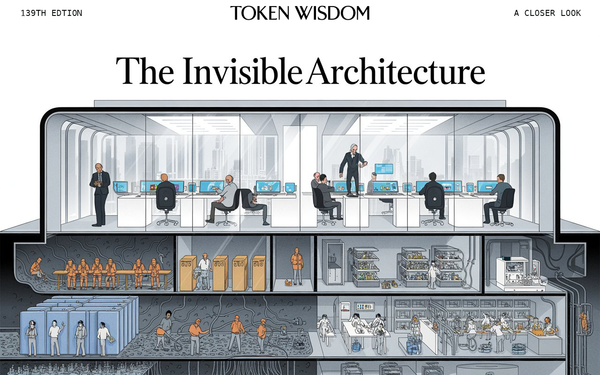A Delicate Balancing Act
As dawn breaks over our sprawling metropolis, CEOs and surgeons, detectives and data scientists alike find their destinies increasingly shaped by an unseen but omnipotent force: artificial intelligence quietly weaves its narrative into every decision, from lofty corporate strategies to life-and-death choices in the ER, redefining our world's rhythm with its digital pulse. Its profound implications for efficiency and insight are tempered only by the formidable intricacy of rendering its decisional processes clear and comprehensible.
Transparency is critical, yet fraught with complications, balancing precariously between the need for openness and the hazards bound up in that very vulnerability. This exploration seeks to illuminate the delicate equilibrium necessary to embrace AI transparency for principled progress while guarding against the exploitation that transparency may invite. The essence of this quest is to calibrate this exchange justly—veering neither into the realm of undue revelation, which could compromise operations and squander competitive edge, nor toward opacity that could diminish the foundations of trust and responsibility.
What follows is a careful unraveling of this complex helix chain of interdependence. Through examining the cases that argue for lucid, interpretable AI, this essay explores the inherent conflicts posed by such transparency: The empowerment of progress on one side, the potential for deleterious consequences on the other. How we traverse this highwire act will determine the trajectory of AI's journey in step with society—striving not only to illuminate AI’s intricate mechanisms but to nurture a framework where innovation is matched with integrity, and technological trajectories are aligned with ethical imperatives.
The Case for Comprehensible and Explainable Machines

AI is becoming an essential, but complex, part of our lives. Cracking its code isn't just beneficial; it's necessary for fostering informed trust and smooth integration into society. AI's transparency supplies the linchpin for regulatory compliance and ethical innovation, especially with most of the ethics committees sidelined in lieu. Consider the healthcare industry where AI models, like those predicting patient outcomes, must explain their inner-workings clearly for clinicians and patients to accept and trust them. We tend to fear that which we do not understand or that which cannot be explained.
At its heart, the call for AI transparency isn't a stylish impulse but a practical necessity. As technological boundaries expand, privacy and security should not be compromised, and ethical guidelines must address these new expanses.
Open interpretability research accelerates AI's integration into society, benefiting sectors from personal healthcare to finance. Take TensorFlow's success in predicting medical events as a case in point. However, this openness isn't without risks. Sharing AI insights publicly lays the groundwork for misuse of technology, as seen in the proliferation of deepfakes.
Herein lies a paradox: openness encourages progress but can also arm competition and enable the spread of malicious falsities. AI platforms like OpenAI's GPT-3 can be double-edged swords—on one edge cutting a path through traditional barriers to knowledge, and on the other possibly aiding in information warfare and economic espionage.
The Top Articles of the Week
100% Humanly Curated Collection of Curious Content
Striking a Balanced Tension between Open and Closed Research

The question of whether to pursue open or closed AI research bends towards a middle path—strategic collaboration. Fusing both paradigms might be the solution, where information exchange is weighed against the protection of sensitive data. This approach neither completely shuts the door on transparency nor leaves it wide open to vulnerabilities. For instance, strategic collaboration can be seen in Apple's differential privacy approach, where user data informs AI improvements while protecting individual privacy.
Closed research, led by companies such as Palantir, veils proprietary algorithms to secure competitive leverage, whereas companies like OpenAI publish their research to invite collaborative advancements, albeit under a proprietary model that is open-source. Drawing the best elements from both camps, the AI field can protect unique intellectual property while fostering an open research culture, on the surface.
Let's examine IBM's Watson Health as a case study: it demonstrates how sharing certain algorithmic methodologies for review can bolster trust without revealing proprietary techniques. Conversely, an excessive cloistering of knowledge can slow innovation and hinder regulatory efforts.
The counterargument to widespread sharing includes a frequent citation of competitive disadvantages and enhanced security risks. The response is not an abandonment of interpretability but its strategic release. Protect disclosures and audits can confirm AI's alignment with ethical practices without exposing the underlying proprietary technology fully.
Responsible AI Research: Calls to Action and Ethics

The burgeoning expansion of AI requires the implementation of ethical scaffolding. In order to achieve this, we suggest the establishment of actionable measures, such as international collaborative groups like the Global AI Ethics Consortium, to promote policy alignment across nations and ensure standardized practices in AI development while eliminating ethical discrepancies.
Additionally, it is imperative to implement AI ethics certification programs at both academic and professional levels to instill responsible AI practices from the onset of individuals' careers. Moreover, interdisciplinary ethics boards within organizations can offer ongoing oversight in this matter. This includes incorporating AI ethics into education curriculum to prepare future leaders.
A Wise Investment of Your Time
List of YouTube videos that captured my undivided attention.
AI's Purpose and Impact on Society
AI stands at a decisive point where its power can considerably shape our society. Clear policies, balanced transparency, and innovative ethics lead AI to an enlightened path where it serves humanity with integrity. AI should be viewed neither as an all-knowing oracle nor as a Pandora's box of uncontrollable forces—it is a tool that can reflect the best of human intellect and ethical action.
In encapsulating the societal impact, emphasis is placed on how AI stands to alter everyday life—beyond abstract concepts and into the reality that touches aspects from privacy concerns to the potential for AI to narrow socioeconomic disparities. The balanced approach to AI transparency has the potential to create an environment where the advancements in technology serve as a bridge to a more inclusive, equitable society. By protecting individual privacy while pushing for collective growth, AI becomes a tool that not only embodies our collective intellect but also acts in lockstep with our ethical and social values.
As AI continues to shape our world, the onus falls on stakeholders to navigate the dynamic interplay between open and confidential research, advocate for ethical conduct, and engage in policy discourse that anticipates future challenges. The need for a clear, shared understanding of AI and its implications on society must be woven throughout the fabric of our global community, ensuring that the march towards an AI-augmented future does not outstep the bounds of our human-centric principles.
Calls to action, such as establishing oversight councils and enhancing educational curricula, are vital to embedding these values into the very core of AI development. Therefore, balancing formality with engagement in our communications ensures that these discussions remain accessible and relevant to a broader audience.
By consciously crafting AI's narrative with ethical integrity at its heart, we can collectively steer this transformative technology to amplify human ingenuity, safeguard our shared values, and cultivate a future wherein technology and humanity progress together.

Don't forget to check out the weekly roundup: It's Worth A Fortune!








Member discussion